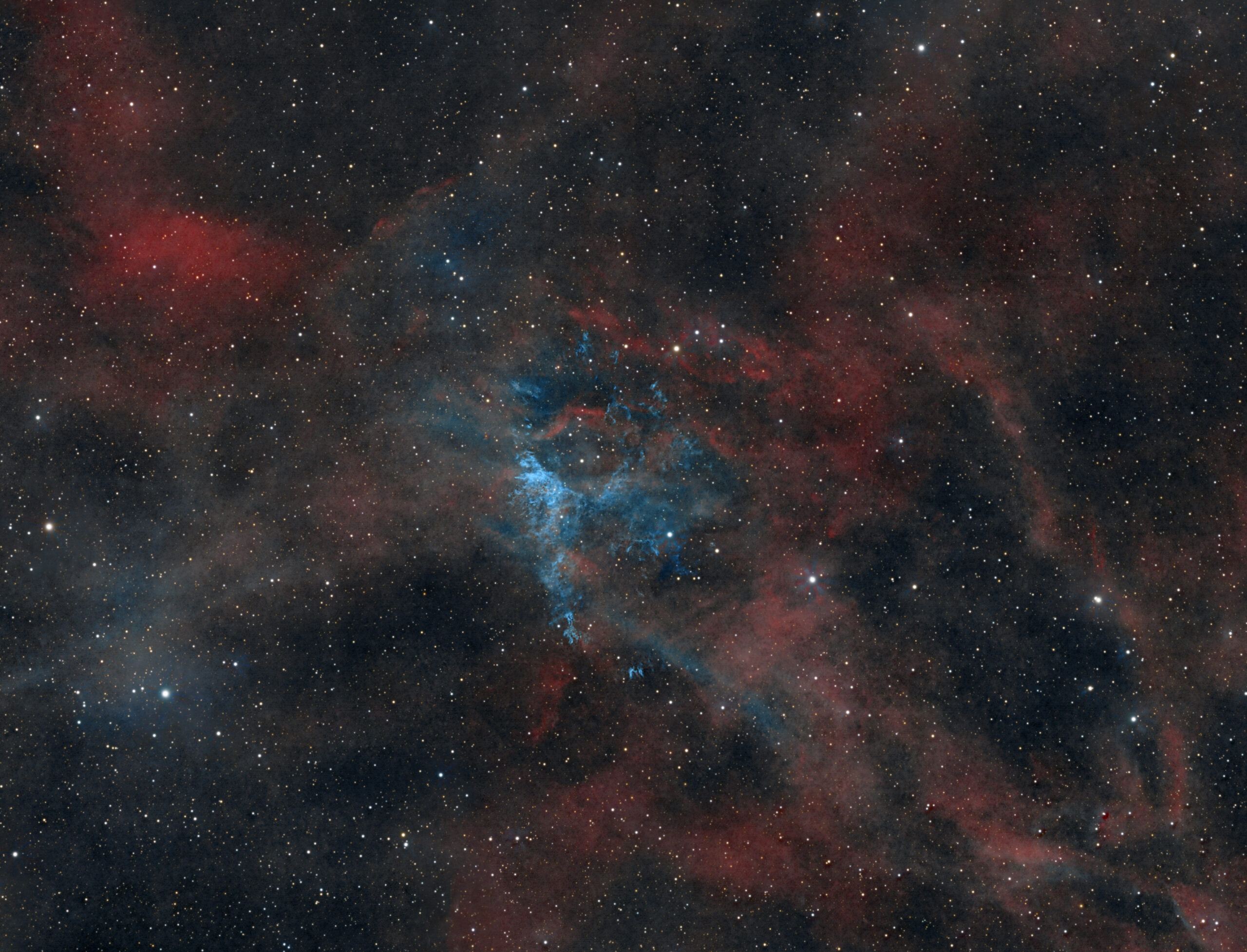
MSH 11-54, also cataloged as G292.0+1.8, is a supernova remnant located about 20,000 light-years away in the southern constellation Centaurus. It spans roughly 8 arcminutes, or about 47 light-years across.
MSH 11-54 is an oxygen-rich remnant — the result of a massive star’s core-collapse supernova.
In this image, the brightest region appears as a cyan-blue core, dominated by OIII emission from fast-moving, shock-heated oxygen-rich ejecta. Within this central structure, delicate filaments and irregular knots can be seen, tracing the complex internal structure of the remnant. Fainter reddish filaments are interwoven, marking areas of Hα emission where hydrogen is being ionized by the expanding shock front.
Extending outward from the core is a halo of diffuse emission, particularly noticeable to the upper right, where filamentary structures suggest continued interaction with the surrounding interstellar medium.
Dark, desaturated regions—especially toward the left—appear to be areas of foreground dust, which may help explain why this remnant is so faint in visible light.
While MSH 11-54 has been studied extensively in X-ray (e.g., by HEAO A-2 and Chandra) and infrared (e.g., by ESA’s ISO mission), it appears not to have been imaged in optical wavelengths likely due to its low surface brightness and the obscuring effects of dust.
Imaged in HOO RGB on my Planewave CDK 700 at Observatorio El Sauce, Chile.
Image acquisition and processing: Mike Selby